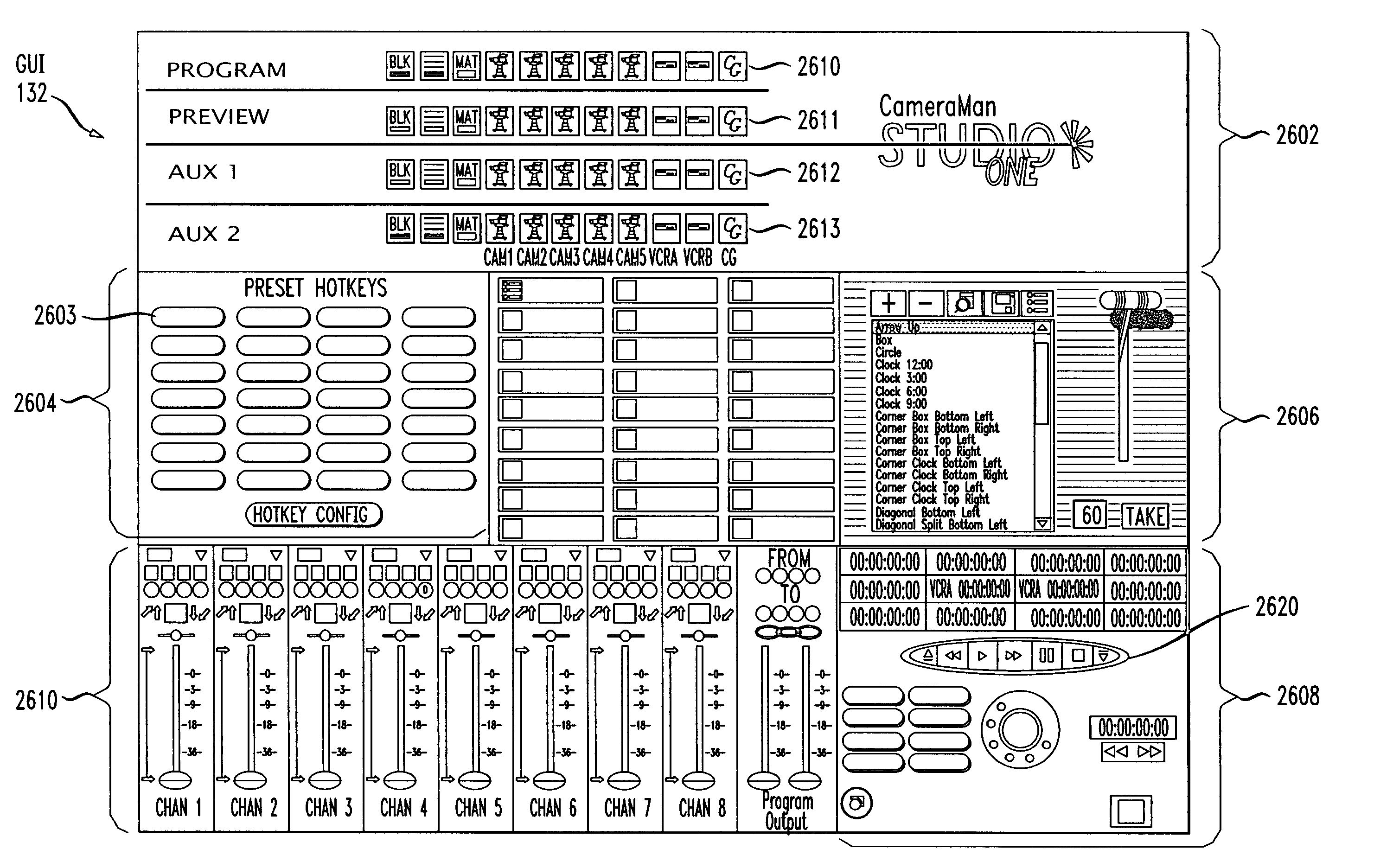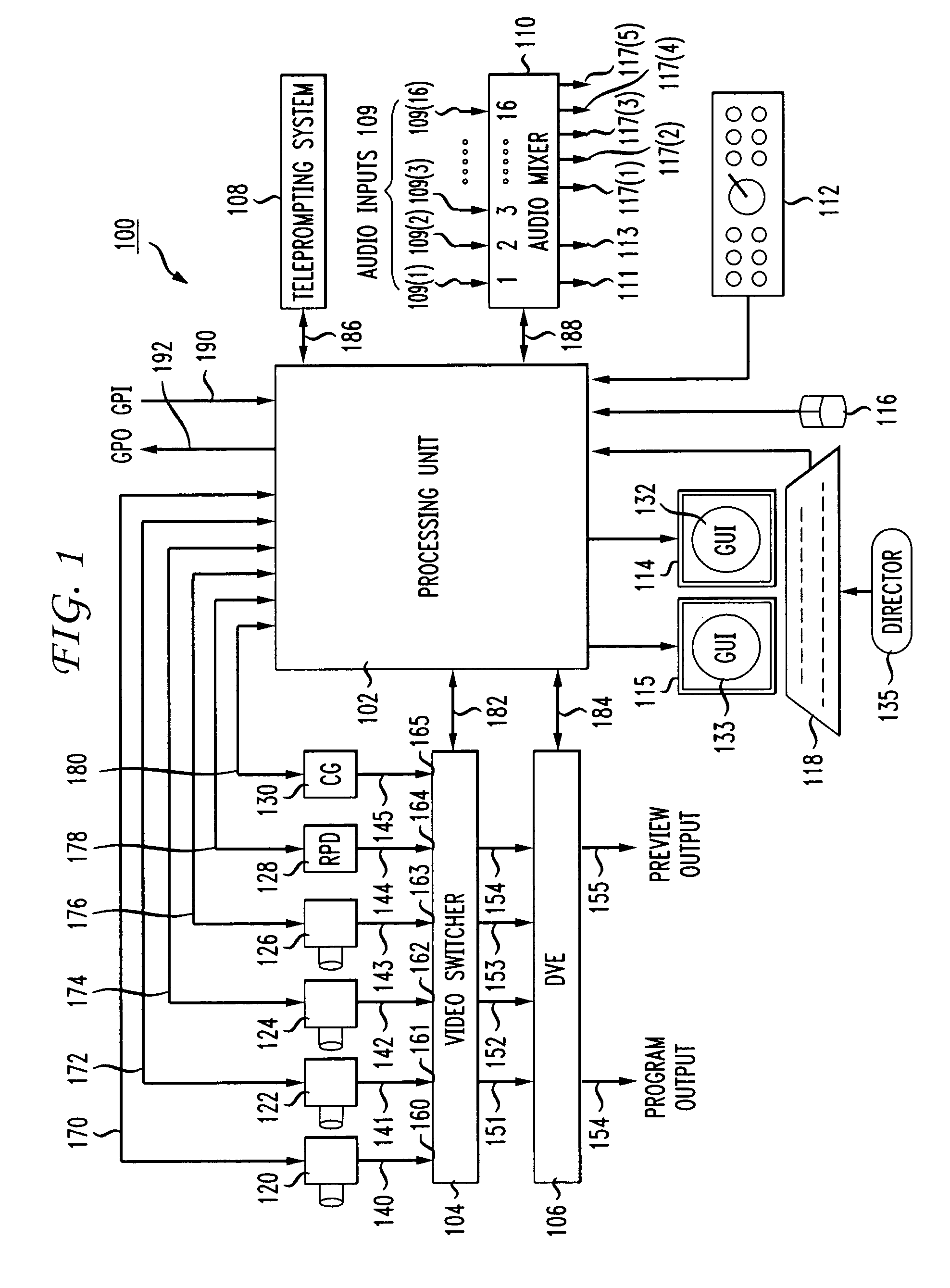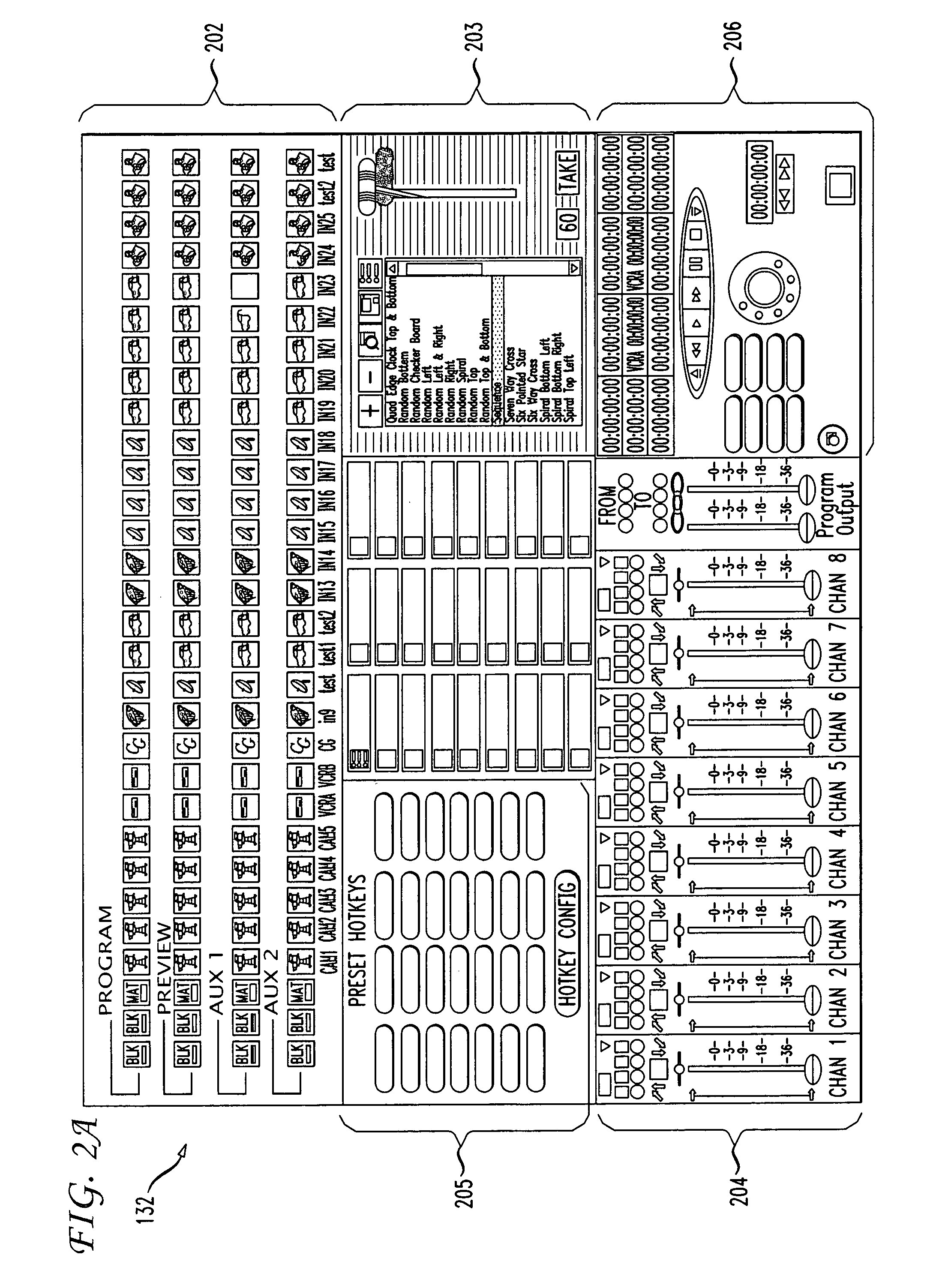System and method for real time video production and multicasting
a real-time video and multi-casting technology, applied in the field of video production, can solve the problems of executing a show that is extremely susceptible to errors, the logistics of executing a show are extremely difficult to plan and realize, and errors are generally expected to occur, so as to increase the potential for advertising revenue, enhance the content of video production, and extend the effect of the conten
- Summary
- Abstract
- Description
- Claims
- Application Information
AI Technical Summary
Benefits of technology
Problems solved by technology
Method used
Image
Examples
Embodiment Construction
Overview of the Video Production System
[0091]FIG. 1 illustrates, according to one embodiment of the present invention, an integrated video production system 100 for automating the execution of a show. The present invention contemplates analog and digital video environments. As shown in FIG. 1, video production system 100, in a representative embodiment, includes a processing unit 102 in communication with a variety of video production devices. Such video production devices include, but are not limited to, a video switcher 104; a digital video effects device (DVE) 106; an audio mixer 110; a teleprompting system 108; video cameras and robotics (for pan, tilt, zoom, focus, and iris control) 120, 122, 124, and 126; a record / playback device (RPD) 128; and a character generator and / or still store 130. RPD 128 can be a video tape recorder / player (VTR), a video server, a virtual recorder (VR), a digital audio tape (DAT) recorder, or any device that stores, records, generates or plays back v...
PUM
 Login to View More
Login to View More Abstract
Description
Claims
Application Information
 Login to View More
Login to View More - R&D
- Intellectual Property
- Life Sciences
- Materials
- Tech Scout
- Unparalleled Data Quality
- Higher Quality Content
- 60% Fewer Hallucinations
Browse by: Latest US Patents, China's latest patents, Technical Efficacy Thesaurus, Application Domain, Technology Topic, Popular Technical Reports.
© 2025 PatSnap. All rights reserved.Legal|Privacy policy|Modern Slavery Act Transparency Statement|Sitemap|About US| Contact US: help@patsnap.com



